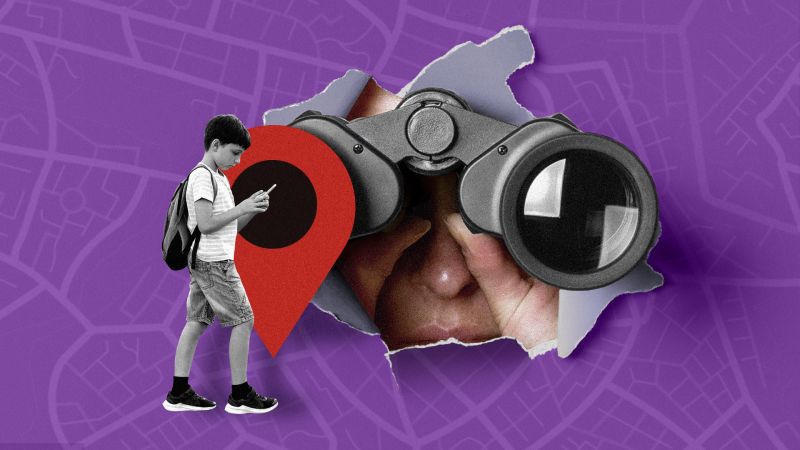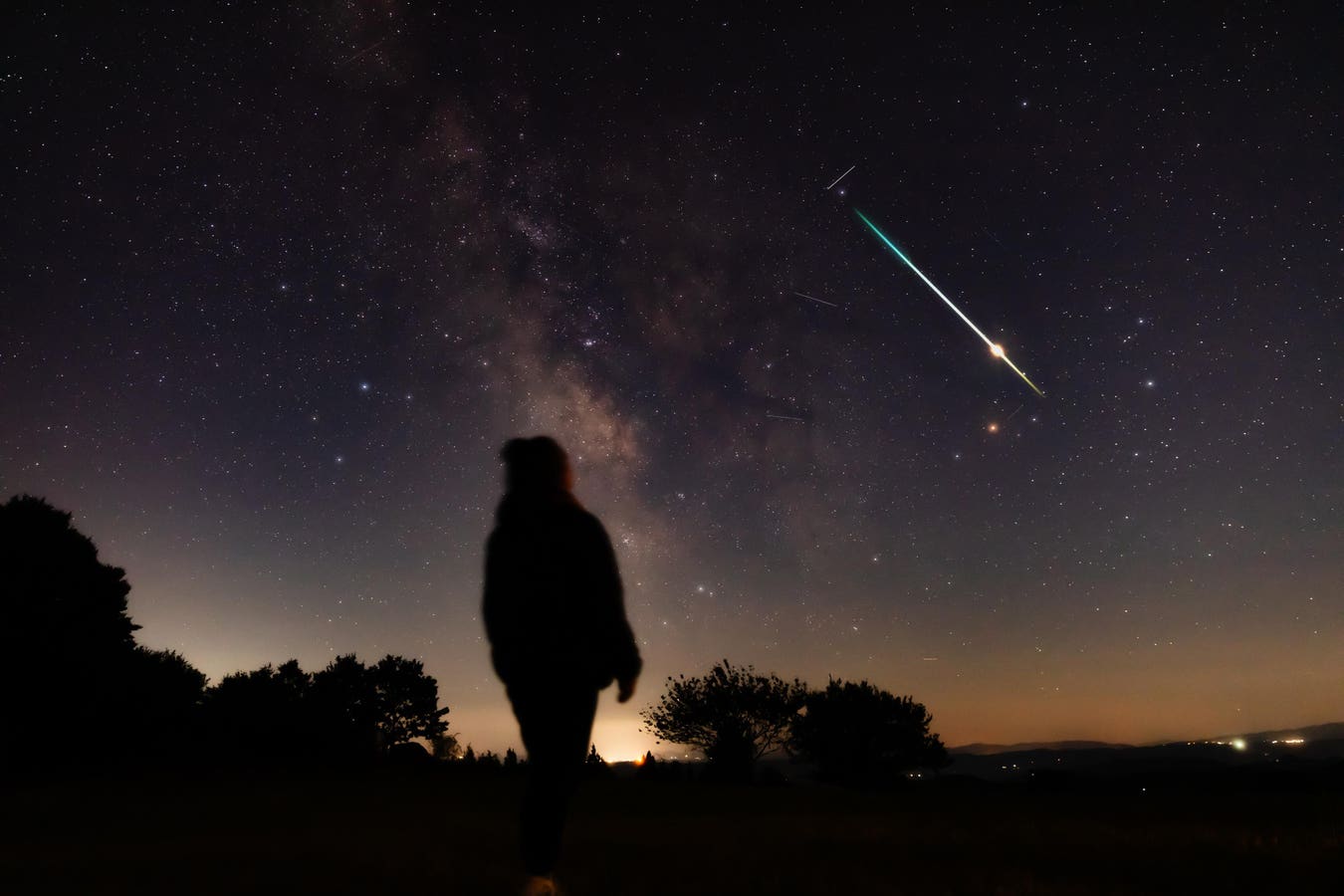The Orionid meteor shower reaches its peak overnight on Tuesday, Oct. 21, through Wednesday, Oct. 22, 2025, just as Comet Lemmon gets closest to Earth on its journey through the inner solar system.
getty
Light pollution is a scourge and, this week, it will block views for city dwellers not only of a major meteor shower, but also the Northern Lights and two rare bright comets.
The Orionid meteor shower reaches its peak overnight on Monday, Oct. 20, through Tuesday, Oct. 21, 2025, just as Comet Lemmon and Comet SWAN get closest to Earth on their journey through the inner solar system. With geomagnetic activity high, it’s likely that northern U.S. states may — in clear skies — see aurora in northern skies, exactly where the comets are.
What’s more, all three events occur during a new moon, when dark, moonless skies are possible. However, despite Orionids often being bright, to get the best views of meteors, the aurora and the comets will require a journey to dark skies.
Why Light Pollution Blocks The View
While the Orionids can produce around 20 “shooting stars” per hour under dark skies, urban observers may see only a fraction of that. That’s because urban lighting casts an artificial glow across the night sky, drowning out fainter celestial objects — including the majority of meteors.
The Orionids — What To Know
- Look east for meteors: Orion rises late in the evening and the radiant climbs higher after midnight.
The Orionid meteor shower is the result of debris left behind by Halley’s Comet during its periodic trips around the sun. It was last in the inner solar system in 1986 and won’t be back until 2061. However, each October, Earth plows through this dust stream, producing fast, bright meteors that streak across the sky. They appear to radiate from the constellation Orion, though they can be seen in any part of the sky.
The shower’s peak this year is particularly well-timed, coinciding with the new moon on Oct. 21. With no glare from the moon — another major light polluter, albeit a. natural source — even the faintest meteors should be visible. But only if you’re under a dark sky.
Comet Lemmon And SWAN — What To Know
- Look north and southwest for the comets: Lemmon will be visible in the northern sky while SWAN will be in the southwest about 90 minutes after sunset.
This year’s Orionids may feature an added bonus in the shape of Comet Lemmon (C/2025 A6) and Comet SWAN (C/2025 R2). The comets reach their closest approach on October 20-21, just as the Orionid meteor shower peaks. If they brighten enough, they could appear to the naked eye — but, again, only in dark skies. Urban glare overwhelms such faint objects, though binoculars or a small telescope will get you a view from almost anywhere.
Northern Lights — What To Know
NOAA’s latest aurora viewlines suggest that aurora displays are a possibility in northern U.S. states and Canada, with 12 U.S. states having a chance over the next few nights. U.S. states that may see aurora include Alaska and (northerly parts of) Washington, Idaho, Montana, Wyoming, North Dakota, South Dakota, Minnesota, Wisconsin, Michigan, New York and Maine.
There’s a seasonal reason. Around the equinoxes in March and September, solar particles can interact more effectively with Earth’s magnetosphere. This alignment, known as the Russell-McPherron effect, dramatically increases the likelihood of geomagnetic storms in the few weeks either side of an equinox.
To check visibility in real time, use NOAA’s 30-minute aurora forecast, or download apps such as Aurora Now, My Aurora Forecast or Glendale Aurora for up-to-the-minute alerts and live solar wind data.
Where To Find Dark Skies
The best advice is to find a Dark Sky Place, a Dark-Sky Preserve (Canada) or a Starlight Destination, or consult a light pollution map and look for dark regions in the vicinity. Try to avoid being south of a big city — that will make comet Lemmon hard to see.
When you’re in position, allow 20-30 minutes in darkness before expecting significant night vision — and leave your smartphone alone.
Check my feed every day this month for a daily “comet tracker” with finder charts and tips for viewing Comet Lemmon and Comet SWAN from mid-northern latitudes. Also read How To Photograph The Green Comets, Best Stargazing Apps For Finding The Comets and 25 Dark Sky Parks In The U.S. To See The Comets.
Wishing you clear skies and wide eyes.
First Appeared on
Source link












